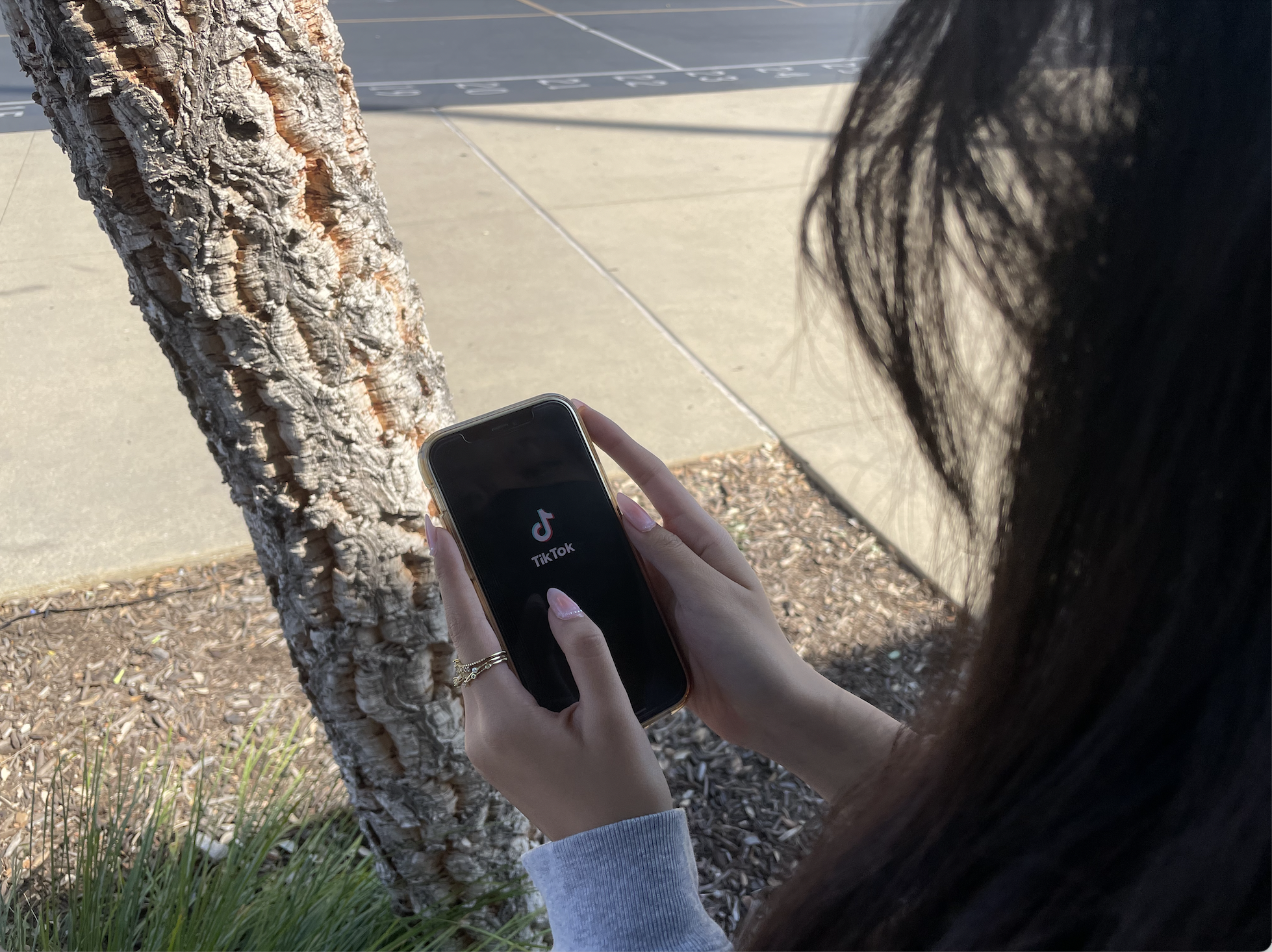TikTok Microtrends Frustrate Teenagers and Sustainable Clothing Advocates
The rise of fashion microtrends on TikTok has left a stain on consumers and the environment.
By Parmin Zamani
Once Grace Vu, 15, saw the argyle sweater that had overflowed her TikTok For You page for weeks, she knew she had to take it home. Without stopping to even try it on, she bought the sweater and left the store. However, after the Irvine, California resident arrived home and tried it on, she didn’t like the way it looked on her. More than that, she went back on her For You page — a curation of videos the app thinks you might like — and saw the trend described as tacky.
“I ended up never wearing it,” Vu says. “The tag is still on there. I never even took it off because the trend already fell out by the time I bought it.”
For millions of teenagers all over the world on TikTok, this is a common experience.
Grace Vu opens TikTok, eager to cure her boredom and find fashion inspiration. Photo by Parmin Zamani
Since the app launched in 2016, TikTok’s expansive reach has spurred countless fashion microtrends, specific items or styles that swiftly rise to popularity, then get knocked out of style just as fast — all within a couple months or weeks. To keep up with these microtrends, fast-fashion brands supply the constant cycle of new clothes. According to a 2022 Earth.org article, the number of clothing items produced each year has doubled since 2000, while clothing utilization has decreased by 36%.
Lorynn Divita, an associate professor of apparel design and merchandising at Baylor University, whose areas of research include fashion forecasting and trend contagion, says TikTok has exacerbated how quickly trends go in and out of style.
“Just like the phrase ‘go viral’ indicates, trend contagion is when a trend spreads from person to person via word of mouth or online. TikTok enables trend initiators to reach larger audiences faster than any time in history, leading to more and more fads or microtrends becoming popular and peaking and fading faster,” Divita says.
The Hockney Dress circulated TikTok as a fashion must-have.
Another example of a microtrend is the House of Sunny green Hockney dress that had a brief glimpse of fame in 2020 after going viral on TikTok. While the original item is made sustainably, fast-fashion companies started creating duplicates and similar styles for a much cheaper price.
Consumers who turn to these fast-fashion brands may enjoy the price, but they may not think about the materials used to cheaply stock trendy items.
“Often the brands that are creating, selling and promoting these microtrends are using harmful materials like polyester or synthetic fabric that are actually just made of plastic,” says Anna Copeland, the manager of research and education at Fashion Takes Action, a Canada-based nonprofit promoting fashion sustainability. She adds that fast-fashion clothes “are often made by people in countries that don’t treat their workers very well, don’t pay them a living wage, and they often endure abuses and lots of issues throughout the supply chain."
Fast fashion also negatively impacts the environment and life on Earth through harmful chemical dyes and microplastics from clothing that wind up inside waterways, animals and humans, Copeland says. According to Earth.org — an environmental nonprofit based in Hong Kong that advocates for sustainable economic policies — 20% of global wastewater comes from textile dyeing, and the fashion industry produces half a million tons of microplastics that reach the ocean each year. After the fish in these waters consume these contaminants, it then works its way up the food chain.
“Fast fashion is very focused on making money and turning a profit; they put profit over people and the planet at the end of the day. That’s accelerated by social media and new influencers on social media that aren’t as conscious of their impact, and it more just comes down to making money and looking cool,” Copeland says.
Anna Copeland, manager of research and education at the nonprofit Fashion Takes Action
The impacts of TikTok microtrends reach beyond the environment. Teenagers struggle with finding clothes that truly represent themselves and what styles they like — that aren’t influenced by TikTok.
“When you see something on TikTok, and it’s presented as something great and fashionable, you really fall for wanting it,” Vu says, “even if you don’t genuinely know whether or not you like the item.”
“It's hard to find your personal style because you feel like you have to dress a certain way for people to like you,” she continues. “And then sometimes it’s also the fear of missing out, and it’s like, ‘If I don’t get this, everyone’s going to have it and I'm not going to have it.’”
Divita offers some advice for TikTok users: “Don't just buy into a trend because you see other people wearing it. As the author Virginia Postrel puts it, ask yourself ‘Do I like that? Am I like that?’ If the answer is yes to both, go ahead and buy it and enjoy it regardless of if it is a current trend or not.”
Copeland is hopeful fast-fashion microtrends will dwindle in the future. However, she says "it's going to sit with consumers on what they’re demanding because if they’re not buying as much, the industry is not going to produce as much.”
TikTok and social media users can also use their platform to promote sustainability of clothes. Many users make videos featuring sustainable fashion brands to check out, how to upcycle your clothes and more.
“Social media can be a platform for good, in that respect, if we are promoting those more healthy and conscious consumer habits,” Copeland says.




